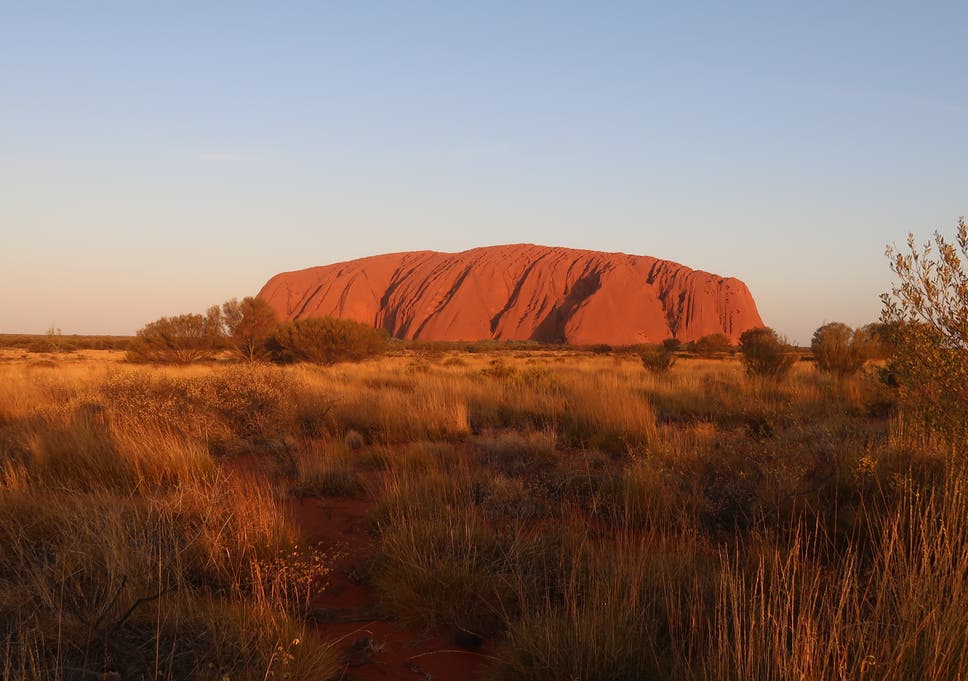
At age 15, I climbed Uluru – or Ayers Rock as it was known at the time – in Australia’s Northern Territory. I was there on a school camp, and my fearless – or were they mad? – teachers had herded a busload of 30 teens from Melbourne up one side of the 348-metre sandstone monolith.
A sliver of a girl, I scrambled up the first section – known as Chicken Rock, probably because it’s where people are most likely to “chicken out” – on all fours so I wouldn’t be blown off the side by the icy June winds. Then, I clung for dear life to a flimsy chain for the vertiginous section that followed.
At the time, I remember being more interested in the cute backpackers in the car park than the geological marvel, or its significance to the Anangu, the Aboriginal people who have held it as a sacred site for about 35,000 years.
Once we reached the summit, we were confronted by gale-force winds and, frankly, little else. There’s a reason why everyone’s holiday snaps are of Uluru itself, and not the view from the top: there’s not much to see up there but vast desert plains.
Fast forward 20 or so years, and I’m back to learn more about site’s cultural and geological significance. And as I stand at the base of Uluru on a sweltering 40C day in March, I decide those teachers were definitely insane. Just looking at the climb tells you it’s dangerous. And the recorded deaths confirm it: 37 people have died attempting the feat since records began in the 1950s, most from heart attack.
Each death is a painful blow to the Anangu, who have tried to stop people from scaling the rock for decades – and their pleas have finally been heard by the Australian government: from 26 October, it will be illegal to climb Uluru. Not that anyone should miss it, given the multitude of alternative fascinating and adrenaline-pumping ways to see the Unesco-listed site. Here are a few of the best…
On the back of a motorcycle
It’s hard to imagine a time I’ve felt more “young and free” – to borrow a line from the Australian anthem – than I did clad in a leather vest and perched pillion on a Harley Davidson as we roared towards the rock. Although the song playing in my head at the time was more Born To Be Wild than Advance Australia Fair.
Uluru Motorcycle Tours was the first registered Harley Davidson tour company in Australia back in 1991. Almost 30 years later, it still offers one of the coolest ways to see the iconic site. After doing a lap of the road around Uluru at 50mph, with a few strategic photo stops, heads turn as you ride into one of the designated sunset car parks to watch as the rock puts on a theatre of colour, transforming from vermilion to violet in the changing light.
From the cockpit of a helicopter
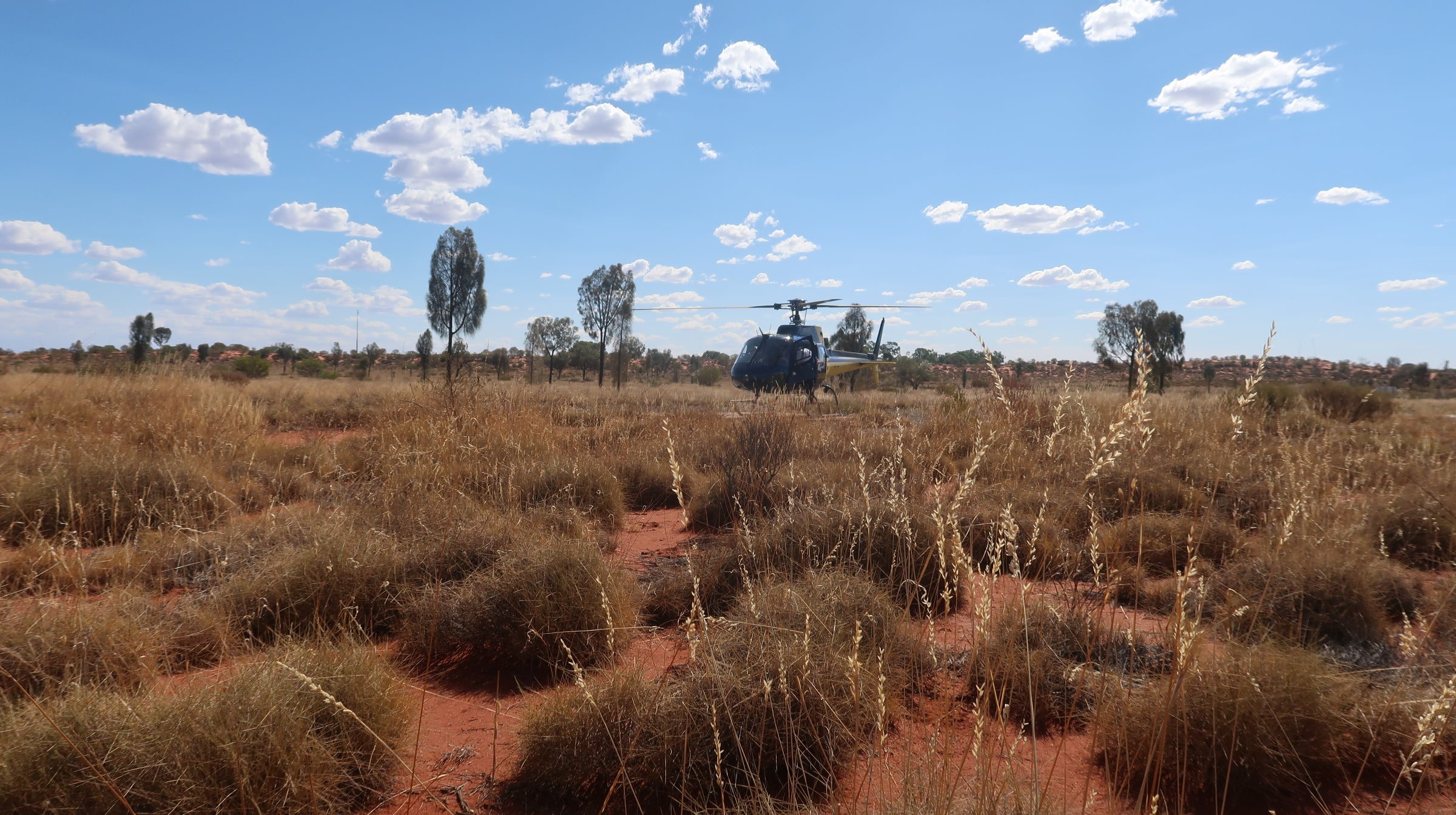
Those with a window seat on the flight to Ayers Rock airport see a glimpse of the rock in the distance as they land. But it doesn’t even come close to the views seen from the 25-minute scenic flight offered by Professional Helicopter Services, which give a bird’s eye look at Uluru, Kata Tjuta and the sand dunes in between.
But there’s another unexpected perk. At this height, you gain a new appreciation for Aboriginal dot paintings, which often depict a map-like, aerial view of the land and were being painted long before aeroplanes ever arrived Down Under.
Not exciting enough? Then jump out of a plane from 12,000 feet with Skydive Uluru, the only company in Australia that jumps next to the monolith, and offers a landing on red earth.
Over a three-course dinner, with a unique focus on light
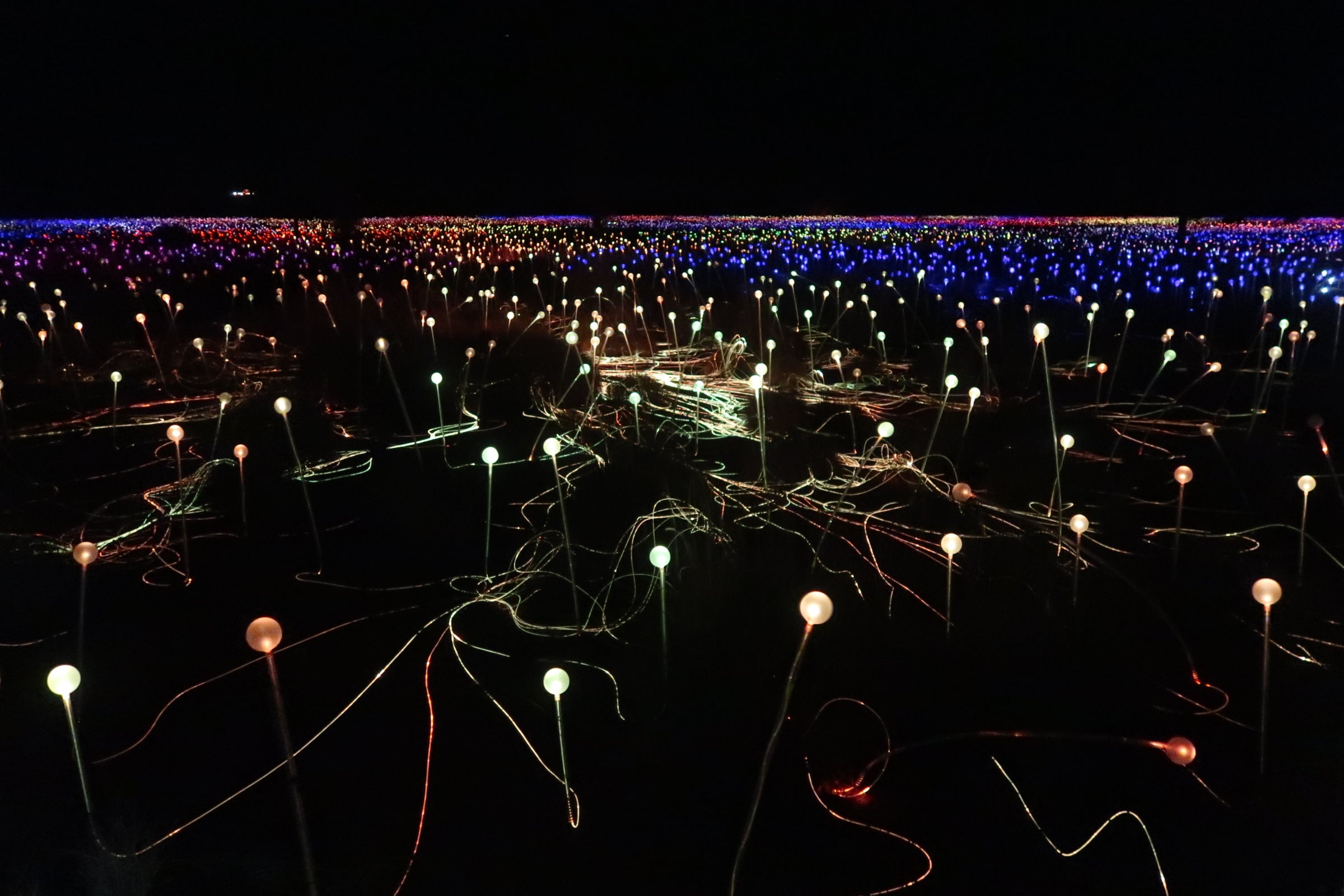
After watching the sunset over Uluru with a glass in hand, a team of waiters show guests to their tables, laid with white tablecloths in the red sand, as an Anangu man plays the didgeridoo. This is A Night at Field of Light, and it’s a memorable start to an evening that continues to impress with each passing hour.
It ranges from a delicious bush tucker-inspired menu – which includes barramundi with lemon myrtle cream, and dukkah-crusted kangaroo with organic quinoa – to a lesson in astronomy so beautiful, it draws an audible gasp from the 100 or so guests in attendance. The night ends with a stroll through the colossal and dream-like Field of Light installation by English artist Bruce Munro, comprised of 50,000 glass bulbs that change colour as they sway in the breeze.
By navigating the base track by bike or Segway
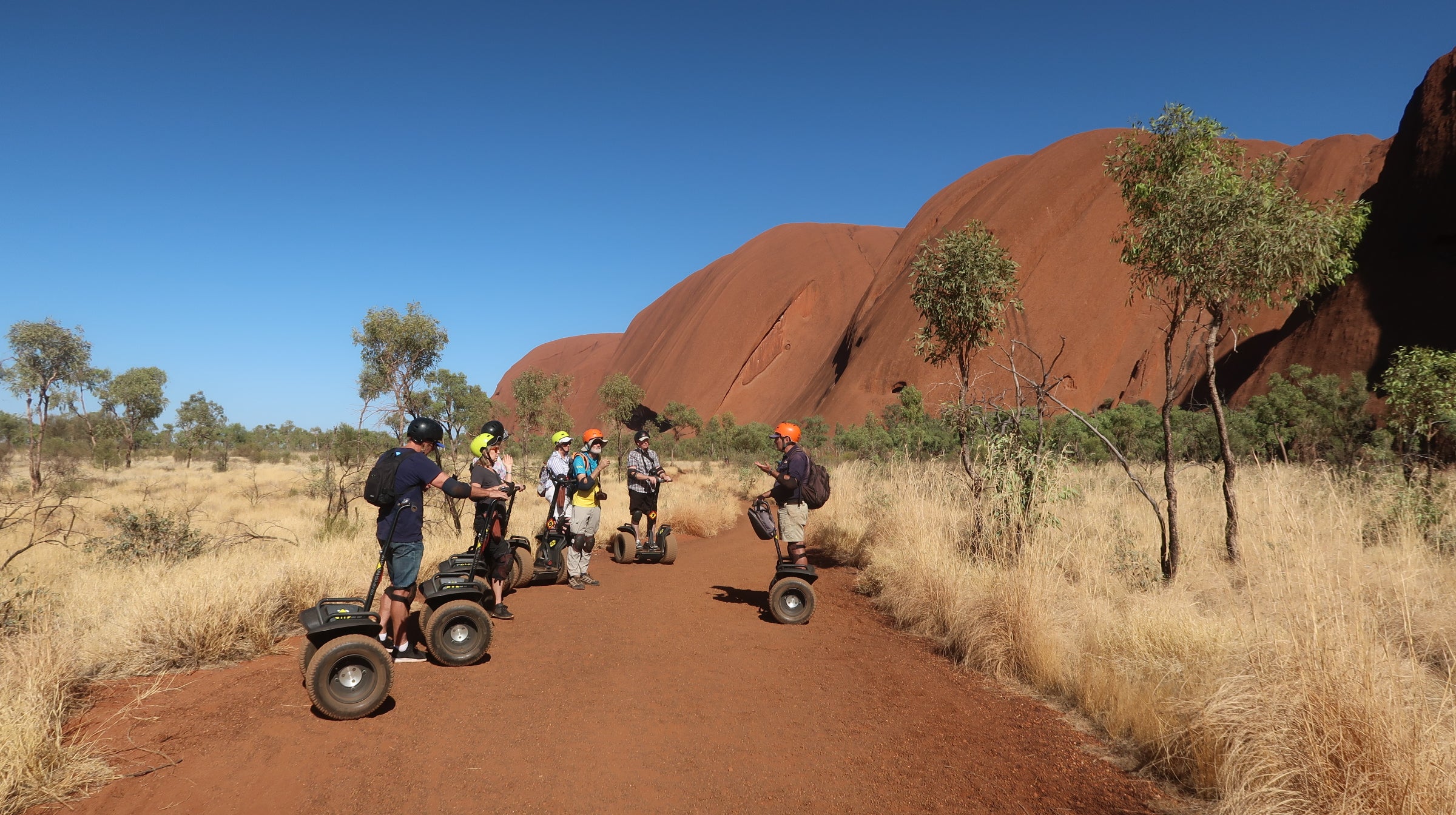
For those keen to explore Uluru without the masses of tourists, it’s worth the early morning wake-up call to be at the site in time for sunrise, around 6.45am, when the place is all but deserted. It’s especially wise during summertime, when the temperature can hit 30C by 8am.
I rented a bike from Outback Cycling and set off for a solo ride around the base track. Most people with a reasonable level of fitness cycle it comfortably in about three hours, allowing time to stop along the way to see Anangu points of interest such as rock art and waterholes. Also ensure you make regular water stops along the way; dehydration can sneak up on you alarmingly fast in the outback.
It’s only marginally busier during the 8.30am Segway tour, during which you zip around the base in about the same time, using considerably less energy. It also comes with the added bonus of a knowledgeable guide, who riffs on everything from Anangu creation stories to geological history.
On foot with the Anangu people
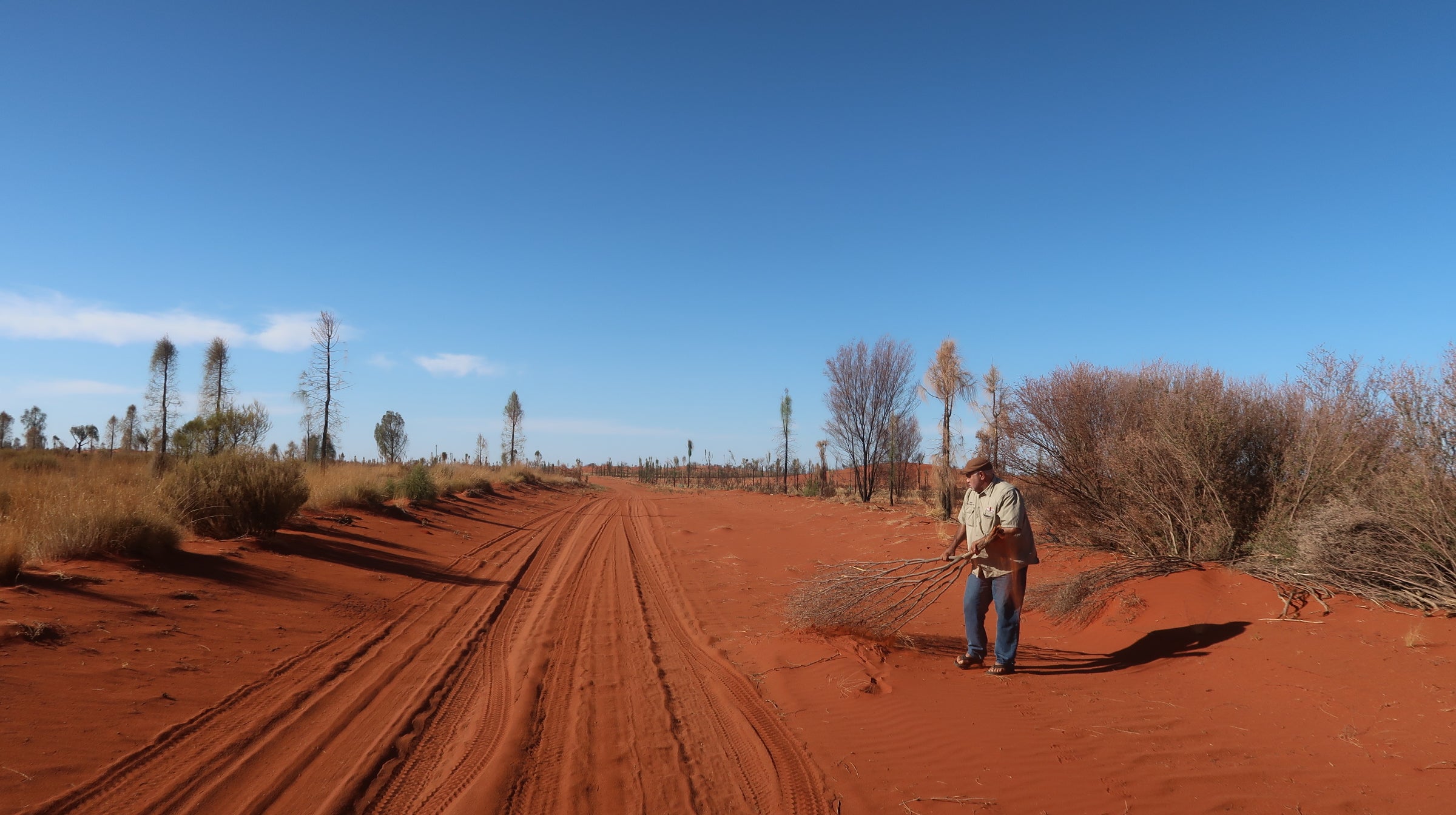
But who better to show you around this magical place than the traditional custodians of the land? Sammy Wilson, a proud Anangu whose grandfather Paddy Uluru fought for Aboriginal land rights, leads me on a seven-hour 4WD tour of Patji, just outside of Uluru-Kata Tjuta National Park, with SEIT Outback Australia.
The time passes surprising quickly as we track wildlife such as kangaroos and sand goannas, and dig up witchetty grubs – which Sammy’s son Ken later cooks for us over a fire he seems to start just by looking at a pile of sticks and kerosene grass. The grubs are tastier than I expect, with a fried egg consistency and a flavour similar to popcorn. I go back for seconds.
Sammy also shares stories about tending to the land, his famous grandfather and Uluru’s recent history, which includes how the title deeds for the National Park were, rightfully, handed back to the Anangu people in 1985. It’s a fascinating insight into an ancient people and the ways in which they are navigating this new modern world.
Towards the end of our tour, we clamber up a small rock face at Tjarpiya, a place used as a hunting ground by the Anangu since the dawn of time. What we are standing on is a pile of rubble compared to the majestic Uluru and Kata Tjuta – but it’s a great vantage point from which to see the twin sacred sites. If you want to climb something for a breathtaking view, ask the Anangu, they know the best place to find it. And they have done for centuries.
Travel essentials
Getting there
Qantas flies non-stop from London to Perth, then via Alice Springs to Uluru. But the most economical way to get there is from London via Sydney inbound, and via Melbourne return, from £924.
Staying there
Ayers Rock Resort in Yulara – a 10-minute drive from the airport, and 30 minutes from Uluru – has different levels of accommodation to suit all budgets, from backpackers to billionaires. For a luxurious outback holiday experience, Sails in the Desert has rooms from A$340, with a minimum three-night stay.







